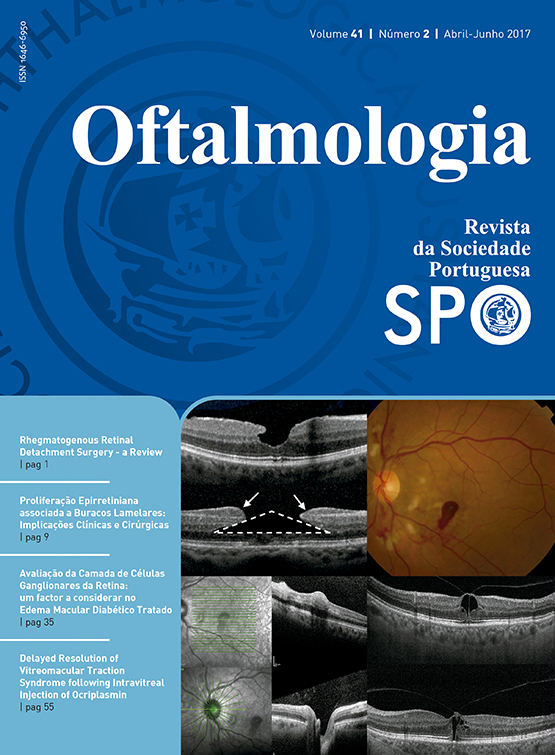Delayed resolution of vitreomacular traction syndrome following intravitreal injection of ocriplasmin
DOI:
https://doi.org/10.48560/rspo.11824Keywords:
ocriplasmin, vitreolysis, vitreomacular traction, vitreoretinal interface, optical coherence tomographyAbstract
Introduction: Ocriplasmin is the first pharmacological treatment option approved for the treatment of vitreomacular traction (VMT), including those associated with macular holes. Resolution of vitreomacular adhesion is typically observed within 28 days of intravitreal ocriplasmin injection with the vast majority of patients experiencing vitreomacular release within the first 7 days of treatment.
Methods: We report two cases of symptomatic VMT, in which we observed delayed VMT release after intravitreal ocriplasmin.
Results: One month after treatment, there was only partial release of VMT in both cases. Complete VMT resolution was achieved in 4 and 2 months, respectively, following intravitreal ocriplasmin injection.
Conclusions: Our case reports shows that favorable results can be observed long after the 28 days established to achieve the final outcome of ocriplasmin treatment, and this may have been facilitated by the initial release of VMT by ocriplasmin. The description of the present case reports adds to the literature suggesting that longer observation may be needed after intravitreal ocriplasmin.
Downloads
Downloads
Additional Files
Published
How to Cite
Issue
Section
License
CC BY
Do not forget to download the Authorship responsibility statement/Authorization for Publication and Conflict of Interest.
The article can only be submitted with these two documents.
To obtain the Authorship responsibility statement/Authorization for Publication file, click here.
To obtain the Conflict of Interest file (ICMJE template), click here







